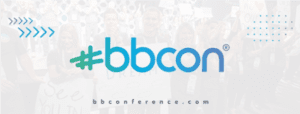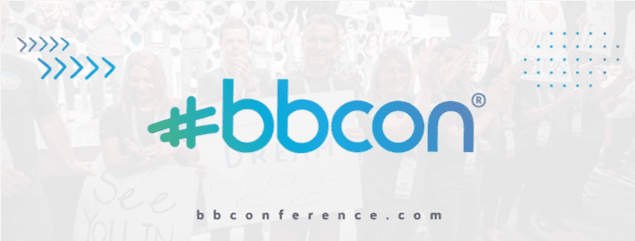 The 2018 session agenda for Blackbaud’s user conference bbcon has been action packed with no shortage of sessions to choose from. But for those of us particularly interested in better understanding some of the trends driving member and donor behavior, The 2018 Digital Outlook Report was close to the top of the list.
The 2018 session agenda for Blackbaud’s user conference bbcon has been action packed with no shortage of sessions to choose from. But for those of us particularly interested in better understanding some of the trends driving member and donor behavior, The 2018 Digital Outlook Report was close to the top of the list.
Yesterday’s session, hosted by HJC’s Mike Johnston, Care2’s Randy Paytner and Kyla Shawyer from Resource Alliance leveraged survey data and anecdotal stories to multi-channel and multi-generational fundraising, brand building and advocacy programs, social media engagement and young donor acquisition (like Generation Z). Although the study focused on Canadian organizations, the content proved valuable to organizations across geographies.
And while these nonprofits are paying greater attention to the digital details more than ever before, there’s still room for improvement:
- 87 percent of respondents hold email deliverability at a high level of importance.
- 77 percent of respondents report having a responsive or mmobile-optimizedweb presence.
- Only 37 percent of survey respondents track website conversion.
Regardless of how sophisticated a nonprofit’s digital strategy is, the session provided important tips and techniques to help bolster email deliverability, mobile optimization and website conversion.
Email Deliverability
- For those just getting started, it’s important to plant the seed with your team. Schedule time to start the conversation about email deliverability and ensure they understand why it’s important. Then learn the ins-and-outs of your system, exploring what’s possible in terms of metrics and testing.
- Organizations who have their email deliverability basics covered but still want to see improvement should explore dedicating a staff resource to email to create end-to-end visibility for campaigns and their performance. Internal strategies and goals should be documented, and spam rates should be tested to eliminate common filters as a potential deliverability issue.
- Even if a nonprofit has great deliverability there’s always an opportunity to learn more. Segment your list to understand if deliverability is higher (or lower) with specific audiences. Monitor your data and optimize your content to keep engagement strong.
SOS Children’s Villages was lacking a process to convert their email subscribers into supporters. With limited time and resources, they decided on an automated, 14-email welcome series with a mix of soft and direct asks. The result? A consistent 29.27 percent average open rate throughout welcome series and overall conversion rate of 2.7 percent.
Mobile Optimization
Being mobile responsive means more than having a smaller version of your website on a mobile screen. Per the 2018 Digital Outlook Report, only 52 percent of nonprofits have a mobile strategy in place. Those without a formal mobile strategy cite lack of internal capacity, budget, and resources as top barriers.
How to make mobile more of a focus?
- Those starting on their mobile journey should ensure their site is responsive to capture the growing percentage of constituents accessing their website via a mobile device. Understand what constituents are looking for, what devices they’re using and the experience they’re expecting and document a plan to get there.
- For those further along with mobile, monitoring responsiveness remains a key area of focus – when the website changes ensure there’s no negative impact to the mobile experience. Monitoring usage data to proactively identify trends is also helpful as is maintaining a strong pulse on commercial sector changes and tools that may help improve the mobile experience further. In one example, BC Cancer Foundation made specific updates to the design of their form based on user feedback and saw a 1000 percent improvement in their conversion rate from mobile devices.
- One of the things we have heard a lot about at bbcon is mobile giving and text-to-give technologies as part of the mobile experience and strategy for nonprofits.
- Organizations experienced with mobile optimization should still take the time to ensure platforms are connected and embrace new technologies as they’re available (and make sense for their mission).
Website Conversion
It’s one thing to get people to your website, but another to know what they do once they get there. Keeping up with trends is one tactic – but what works best for your org? The results can be incredible for organizations willing to follow some simple best practices.
- For those just getting started, the panel recommended a straightforward, 3-step approach. Research to understand your web traffic – where it’s coming from, where it’s going. Commit to a plan for improving conversion in specific areas by writing a formal plan and then focus on a clear call to action.
- Those making strides in improving their website conversion but still not seeing the results they expected should focus on the data to identify specific, incremental opportunities for content optimization and dedicate someone internal to oversee your analytics. Knowing the system, as we mentioned previously, is so crucial to reaping the benefits of what you have implemented. Provide training if need – it will go a long way
- The 37 percent already prioritizing improving website conversion can still take what they know and make it better. Fresh content is critical in keeping returning users satisfied. And take data to the next level but understanding attribution to drive clear actions and next steps.
- Fresh content and natural language conversations fuel SEO rankings and support higher conversion. Tools like blogs, forums and discussion boards support higher engagement, decreased bounce rates, a higher number of returning users and a stronger community.
